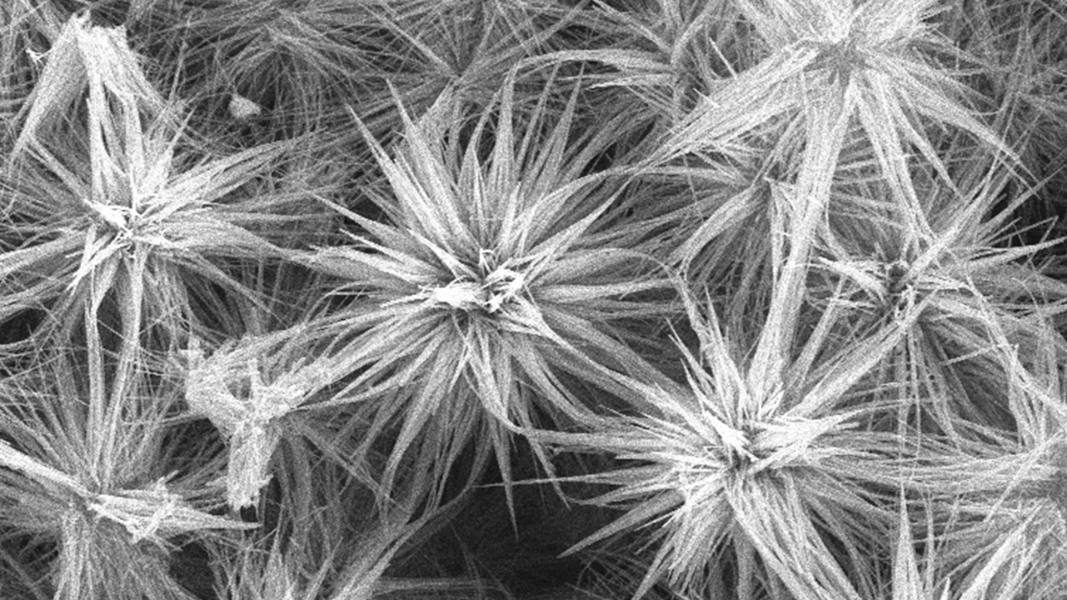Nonaqueous lithium–oxygen (Li–O2) batteries are set to revolutionize the energy-storage market, as their energy density is 5–10 times higher than conventional lithium-ion batteries. Oxygen diffusion through the device structure limits device performance, but now, inspired by the structure of plants, efficient O2 diffusion could be possible.
In their article in Advanced Energy Materials, Dr. Mingsen Zheng, Prof. Quanfeng Dong, and co-workers from Xiamen University demonstrate an open-structured electrode, cobalt sulfide-porous carbon foil (Co9S8-PCF), as an oxygen cathode in Li–O2 batteries.
A 3D interconnected network of microflowers, composed of 1D acicular nanorods atop a porous carbon foil (PCF) substrate, forms the Co9S8-PCF electrode.
A Li–O2 battery was assembled using the Co9S8-PCF as an oxygen cathode, which offers a high discharge capacity of ≈6875 mA h g–1, and lower polarization, better reversibility, and greater cycling stability than a CoO-PCF electrode.
The superior performance is attributed to many hydrangea-like lithium peroxide (Li2O2) particles, which are deposited uniformly over the periphery of the acicular Co9S8 nanorods after discharging. The good contact of Li2O2 with the electrode leads to efficient transport of oxygen and electrons.
As a proof of concept, the Li–O2 battery was used to power a light-emitting device.
To find out more about this Co9S8-PCF electrode for Li–O2 batteries, please visit the Advanced Energy Materials homepage.

















